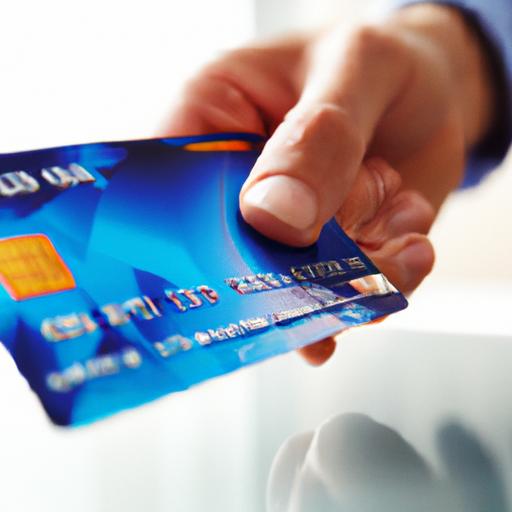Global Payment Solutions
Global Payment Solutions: Content on international transactions, currency exchange, and global payment gateways.
Mobile payments have taken the world by storm, transforming the way we shop and conduct business. It’s no longer just a fad; it’s a revolution that has reshaped the global commerce landscape. The rise of mobile payments in international commerce is a phenomenon that is impossible to ignore.
Gone are the days when cash and credit cards ruled the world of transactions. With the advent of smartphones and the convenience they bring to our lives, it was only a matter of time before we started using them to pay for our purchases too. Whether it’s ordering food from a local restaurant or buying a souvenir from a bustling market overseas, mobile payments have made it easier than ever to complete transactions with just a few taps on a screen.
One of the main reasons behind the surge in mobile payment usage is its simplicity. Gone are the days of fumbling for loose change or anxiously waiting to enter your credit card details in a crowded store. Now, with just a few clicks, you can pay for your purchases effortlessly, allowing you to focus more on enjoying your shopping experience rather than worrying about payment methods.
But it’s not just the ease of use that has propelled mobile payments to the forefront of international commerce. The security provided by mobile payment apps has also bolstered their popularity. With advanced encryption and authentication measures, these apps ensure that your financial information is safe from prying eyes. This extra layer of protection has instilled a sense of trust among consumers, making them more comfortable with using mobile payments for their international transactions.
Moreover, mobile payments have broken down the barriers of distance and currency. No longer do you need to worry about carrying wads of foreign currency while traveling abroad. With mobile payment apps, converting currencies has never been easier. You can pay in your local currency and let the app handle the conversation for you, saving both time and money.
The rise of mobile payments has also paved the way for seamless, contactless transactions. With the ongoing COVID-19 pandemic, the need for touch-free payments has become paramount. Mobile payment apps have provided the perfect solution, allowing customers to avoid physical contact and reduce the risk of spreading germs.
As the world becomes more interconnected, the need for a universal payment method becomes increasingly important. Mobile payments offer a solution that transcends borders and provides a seamless payment experience for both consumers and businesses. This has opened up new opportunities for international commerce, allowing businesses to reach a broader customer base and cater to the demands of a global market.
In conclusion, the rise of mobile payments in international commerce has revolutionized the way we buy and sell. Its simplicity, security, and ability to break down barriers have made it an indispensable tool for consumers and businesses alike. As technology continues to advance and mobile payment apps become more sophisticated, we can only expect this revolution to grow stronger. So, say goodbye to your bulky wallets and hello to the world of mobile payments!
International trade has become a whirlwind of exciting opportunities, connecting businesses from different corners of the globe. It’s a beautiful dance where products and services seamlessly cross borders, fostering globalization like never before. However, the backbone of this extravagant affair often goes unnoticed – payment gateways.
Think of payment gateways as the smooth operators of the international trade world. They’re like the charming jewelry store clerk who deftly handles your purchase, making sure you leave with a smile on your face and a heart full of anticipation. These tech-savvy gateways facilitate the transfer of money between buyers and sellers, transcending borders and currencies. Without them, international trade would be a confusing tangle of hurdles and lost opportunities.
Picture this – you’re a small business owner in Bangkok, and you receive an inquiry from a customer in Amsterdam who adores your handcrafted cushions. Eager to make the sale and expand your reach, you want to offer a seamless payment option that fits both your needs and your customer’s preferences. Here’s where payment gateways swoop in like superheroes, saving the day.
With payment gateways, not only can you securely accept payments from Amsterdam, but you can also allow customers from around the world to pay using their preferred method. Whether it’s PayPal, Stripe, or good old credit cards, payment gateways bridge the gap between buyers and sellers, making cross-border transactions as effortless as a stroll on a sandy beach.
But it’s not just about ease. Payment gateways also play a crucial role in protecting both parties in a transaction. Just like a vigilant bouncer who spots fake IDs, these gateways offer robust security measures to safeguard customer information, detect fraud, and prevent data breaches. This way, both sellers and buyers can sleep soundly, knowing that their money is handled with the utmost care.
Now let’s fast forward to the moment where the sale is made, and the payment is on its way to you, the Bangkok business owner. This is where the magic happens. Payment gateways seamlessly convert the customer’s currency into yours, ensuring that you receive the exact amount agreed upon, minus the pesky exchange rate woes. It’s like having a language translator who effortlessly translates every word, allowing commerce to speak a universal tongue.
But wait, there’s more! Payment gateways also assist in the perilous journey of customs duties and taxes. Imagine shipping a box of your finest tea blends to a tea enthusiast in London. Just as your package arrives at the buyer’s doorstep, an unwelcome surprise pops up – a hefty customs duty bill. Before panic sets in, payment gateways step in with their digital superpowers, providing accurate calculations of customs duties, taxes, and any additional charges that come along. It’s like having a trustworthy mentor to guide you through the maze of international regulations.
In conclusion, payment gateways are the unsung heroes of international trade, enabling businesses to effortlessly connect with customers worldwide. With their seamless payment options, robust security measures, currency conversion prowess, and knowledge of customs duties, these gateways make international trade a symphony of joy rather than a cacophony of turmoil. So, let’s raise a glass to these digital maestros, for behind every successful international transaction, there’s a payment gateway making sure the melody stays delightfully harmonious.
Picture this: You’re exploring a bustling marketplace in a foreign land, your senses overwhelmed by the vibrant colors, tempting aromas, and the melodic buzz of voices speaking a myriad of languages. As you browse through the stalls, your eyes alight upon a beautiful handmade piece of artwork that you know would be the perfect souvenir to bring back home. Eager to make your purchase, you approach the vendor with a smile, only to find yourself faced with an unexpected roadblock: the vendor only accepts payments through a mobile app that you’ve never heard of.
Welcome to the fascinating world of global markets and the challenges of adapting to local payment preferences. In an increasingly interconnected world, businesses are venturing beyond their borders, seeking new opportunities and expanding their customer base. However, this expansion comes with its fair share of obstacles, and one of the foremost among them is navigating the diverse payment landscape.
Gone are the days when cash was king and credit cards were the go-to payment method worldwide. Today, global markets are marked by a multitude of payment preferences, with each country and region having its own unique set of favored payment methods. From mobile wallets and QR codes in Asia to contactless payments and bank transfers in Europe, understanding and adapting to these local preferences becomes crucial for businesses aiming to succeed in international markets.
So, how can businesses effectively accommodate these diverse payment preferences? The key lies in being adaptable, innovative, and most importantly, customer-centric. Gone are the days of a one-size-fits-all approach to payments; instead, businesses must be willing to adapt their strategies to align with the preferences of each market they target.
One of the first steps in navigating the labyrinth of global payments is understanding the local landscape. Thorough research and market analysis will help businesses gain insight into the preferred payment methods in a particular region. For instance, in China, where cash is rapidly becoming a thing of the past, integrating with popular mobile payment platforms like Alipay and WeChat Pay is essential for success.
However, understanding local payment preferences is just the tip of the iceberg. Implementing the necessary infrastructure to accommodate these preferences can be a complex and costly endeavor. This is where innovation comes into play. Businesses need to embrace new technologies and payment solutions that simplify the customer experience while being adaptable to local markets. Whether it’s developing secure mobile payment apps or integrating with existing platforms, investing in innovative solutions that cater to local preferences can be the key differentiator in global markets.
But it doesn’t stop there. To truly succeed in adapting to local payment preferences, businesses must continually evolve and refine their strategies. Just as payment preferences change over time, so too must businesses’ approaches. This means consistently gathering feedback from customers, monitoring market trends, and being open to new opportunities as they arise.
In a world that grows more interconnected by the day, it is essential for businesses to adapt to local payment preferences for continued success in global markets. By being adaptable, innovative, and customer-centric, businesses can thrive in a world where every corner has its own preferred way of paying. So, don’t be afraid to embrace the diverse payment landscape and immerse yourself in the world of local preferences – you never know what wonders you might discover along the way.
Taxes are like your overprotective mother-in-law, constantly looming over every financial decision you make. And just when you think you have mastered the art of domestic tax compliance, bam! International card transactions come along, turning your financial world upside down.
Picture this: you’re strolling through the vibrant streets of a charming European city, basking in the glory of a well-deserved vacation. Suddenly, you spot your dream leather jacket that oozes style and screams “buy me.” Your heart skips a beat, and before you know it, you whip out your shiny plastic friend – your international credit card.
But hold on tight there, globetrotter! Did you ever stop for a second and ponder the tax implications of that seemingly innocent purchase? Probably not. Don’t worry, though; you’re not alone. Navigating the labyrinth of tax rules in international card transactions is enough to give even the most seasoned travelers a headache.
Let’s start with the basics. When you make a purchase using your international card, you’re essentially engaging in a cross-border transaction. And as if life couldn’t get more complicated, tax authorities love to micromanage these transactions. They want to know if they get a share of the pie, or in simpler terms, they want a slice of your hard-earned money.
So how do you keep the taxman away while enjoying your shopping spree? The key lies in understanding the concept of VAT (value-added tax) and its varying rates across different countries. VAT adds a tax percentage to the final sales price of most goods and services. Ah, those sneaky Europeans and their VAT schemes! Some countries may even give you the opportunity to claim a refund on VAT when you leave. Now, that’s a hidden treasure worth acquainting yourself with!
But here’s the catch: not all countries have the same VAT threshold. In some places, like the UK, you need to spend a certain minimum amount in a single transaction to qualify for a VAT refund. So, if you indulge in a little too much shopping, Uncle Sam might be watching, and trust us, he won’t be picking up the tab.
Furthermore, don’t forget about the horrifying creature known as foreign exchange rate fluctuations. Whenever you use your international card, you’re exposed to this monstrous beast. Let’s say you made a purchase in a foreign currency when the exchange rate was favorable. You’re beaming with joy, right? Well, hold your breath, because by the time the transaction hits your card statement, the exchange rate might have taken a nosedive. Suddenly, your dream jacket doesn’t seem like such a great buy anymore, financially speaking.
To make matters even more exciting, different countries have various tax treaties in place. These treaties aim to avoid double taxation and ensure a harmonious financial universe. They can play a crucial role in determining how much tax you owe in one country versus the other. It’s like witnessing the grand battle of nations, with tax authorities fighting it out behind the scenes.
But fear not! You don’t need to become a tax expert overnight. A good strategy is to arm yourself with knowledge and seek guidance from professionals, such as tax advisors or accountants with international expertise. They possess the power to decipher the complex world of international tax and guide you towards the path of financial sanity.
Remember, fellow explorers: international card transactions may come with their fair share of tax implications, but armed with knowledge and a dash of caution, you can navigate these treacherous waters. Now go out there and enjoy your shopping adventure, and don’t forget to keep your receipts – those might just become your tax-saving lifeline!
In the vast landscape of the digital world, where borders are blurred and distances are reduced to mere pixels, cross-border e-commerce has emerged as a powerful force. From the comfort of our living rooms, we can now explore and shop from vendors around the globe, opening up a myriad of opportunities for both buyers and sellers. However, amidst the convenience and endless options, one crucial ingredient is often missing from the recipe of this virtual bazaar: trust.
Trust, unlike quirky online purchases, cannot be shipped or downloaded. It is a delicate seed that needs to be sown and nurtured to grow. In cross-border e-commerce transactions, trust takes on an even more vital role, considering the geographical and cultural differences that can make or break a deal. But how can we cultivate trust in a world where screens mediate every interaction?
First and foremost, effective communication is the lifeblood of trust-building. In the realm of cross-border e-commerce, it is imperative to bridge the gap that separa tes buyers and sellers, be it in terms of language, customs, or even different time zones. Technology has gifted us with a plethora of tools to facilitate this connection – from instant messaging apps to video calls – so embrace them and utilize them to establish a genuine rapport.
Next, authenticity holds the key to unlocking trust’s treasure chest. In a world of counterfeit products and fabricated reviews, buyers are yearning for genuine, reliable vendors. Therefore, sellers must invest in building an authentic online presence that reflects their values, expertise, and commitment to customer satisfaction. This could be achieved through comprehensive product descriptions, showcasing customer testimonials, or even introducing the faces behind the brand. By revealing the human side of the business, sellers can instill confidence in buyers, reassuring them that they are not just another faceless entity hidden behind a screen.
Thirdly, transparency serves as a powerful catalyst in trust formation. Buyers often crave a peek behind the curtain, a glimpse into the inner workings of the transaction. Give it to them! Be transparent about the shipping and handling process, return policies, and any potential taxes or fees. In a world where hidden charges feel like a slap in the face, transparency is the antidote that can soothe the pain and foster trust.
Furthermore, mitigating risks is fundamental to building trust in cross-border e-commerce. Buyers may be hesitant to make purchases due to concerns over product quality or the security of their personal information. Proactively addressing these concerns can help sellers establish a shield of trust. Providing accurate product images and detailed specifications, ensuring secure payment gateways, and protecting customer data are all crucial aspects in ensuring a smooth and secure transaction.
Finally, the power of social proof should not be underestimated. Just as we trust the opinions and recommendations of our friends and family, online buyers seek validation from others who have treaded the path before them. Encouraging satisfied customers to leave reviews and ratings can act as a powerful testament to the quality of products and services. Additionally, showcasing partnerships with trusted organizations or certifications can provide an added layer of credibility.
Building trust in cross-border e-commerce transactions is not a walk in the park, nor is it a task that can be completed overnight. It requires dedication, authenticity, transparency, risk mitigation, and a dash of social proof. The road may be long and riddled with challenges, but by embracing these trust-building strategies, sellers can forge genuine connections with buyers, contributing to a thriving cross-border e-commerce ecosystem where trust reigns supreme.
Do you often feel like you’re missing out on opportunities to maximize your credit card rewards and benefits? Trust me, you’re not alone. With so many enticing credit card offers flooding our mailboxes and inboxes, it’s easy to get overwhelmed and end up settling for less. But fear not! In this article, we’re going to unlock the secrets to making the most of your credit card transactions, ensuring you score big on rewards and benefits.
First things first: research and choose the right credit card for you. Remember, not all cards are created equal, and each offers different perks and rewards. Are you a frequent traveler? Look for a credit card that offers generous airline miles or hotel rewards. Love to indulge in retail therapy? Seek out cards that provide cashback or discounts on your favorite stores. By figuring out your spending habits and lifestyle, you can find the card that best aligns with your interests and goals.
Once you’ve found your perfect match, it’s time to dive into the fine print. Yes, I know, it can be a snooze-fest, but trust me, it’s worth it. Familiarize yourself with the terms and conditions, especially those related to rewards and benefits. Does your card require you to activate the rewards program? Are there any spending limits or bonus periods? By understanding these details, you can ensure you are fully utilizing the perks available to you.
Now comes the fun part – strategizing your spending. Yes, it’s all about making those transactions count! Many credit cards offer higher rewards in specific spending categories, such as groceries, gas, or dining. If your card falls into this category, take advantage of it! Plan your purchases accordingly and concentrate your spending on those bonus categories. You’ll be amazed at how quickly those rewards start to accumulate.
But wait, there’s more! Some credit cards have partnerships with specific retailers, both online and offline. These partnerships often offer additional discounts and perks exclusive to cardholders. So before you whip out your card, check if your favorite stores have any ongoing promotions for your credit card. You may be pleasantly surprised by the extra savings and benefits waiting to be claimed.
In addition to everyday spending, be on the lookout for sign-up bonuses and limited-time offers. Many credit cards entice new customers with generous bonuses after reaching a spending threshold within a specific timeframe. Keep an eye on these opportunities and seize them when they align with your planned expenses. It’s like adding icing on top of an already delicious cake!
Last but not least, remember to pay your credit card bills on time and in full. I know, it’s not the most exciting part, but trust me, it’s crucial. Carrying a balance can quickly eat into your rewards with hefty interest charges. Plus, who wants to rack up debt while trying to enjoy the benefits of their credit card? So stay on top of your payments and watch your rewards grow without any unwanted interest baggage.
In conclusion, maximizing rewards and benefits with credit card transactions is all about research, fine print, strategy, and responsibility. By choosing the right card, understanding the terms, strategically planning your purchases, taking advantage of partnerships and limited-time offers, and paying your bills diligently, you’ll be well on your way to reaping the rewards and benefits that credit cards have to offer. So go forth and swipe wisely – your wallet will thank you!







